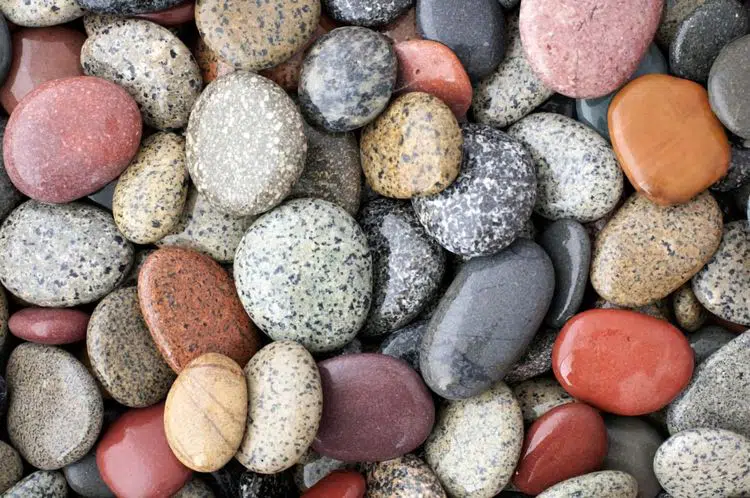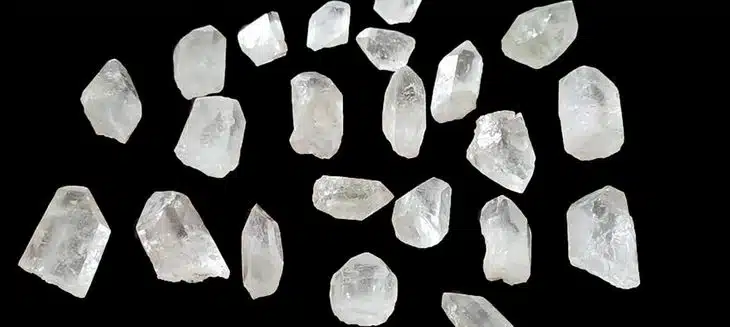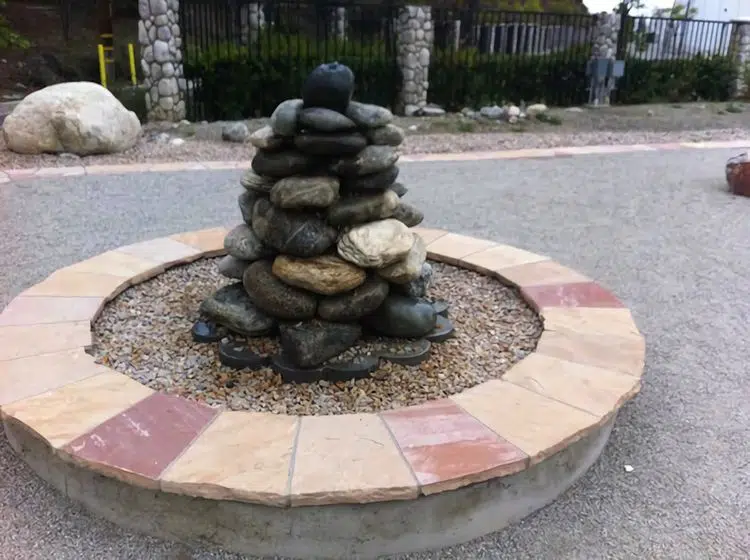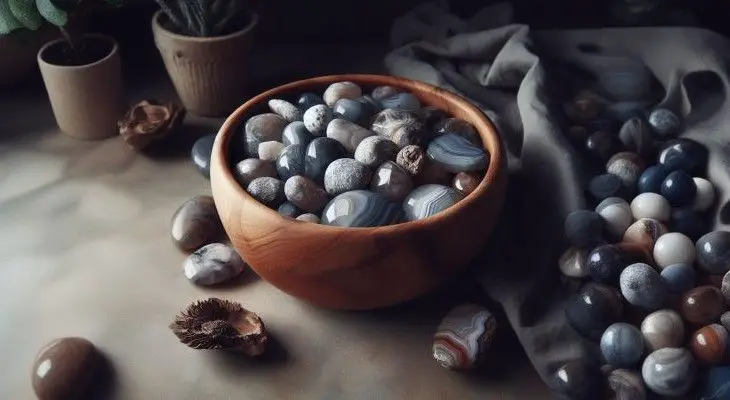This article is intended to be a comprehensive guide on how to polish rocks. It’s perfect for rock collectors, kids with pocket change, and anyone looking to improve their craftsmanship or just learn more about the hobby. You’ll find answers to common questions like “how do I polish rocks?” and “what are some of the best types of rocks?” We hope this guide will help you in your rock polishing journey!
What is rock polishing?
Rock polishing is a process in which rocks are made smooth and shiny. Craftspeople often polish rocks for decoration or practical use, such as making gemstones out of them. The most common type of rock polished is the agate – they’re usually bright in color and highly visible when cut into small pieces. Other types of stones that can be polished include jasper, flint, quartzite.
To polish rocks, you’ll need a few simple tools. The first is an abrasive material like sandpaper – this will be your most important tool as it’s what removes the rough parts of the rock and makes them smooth. Next are the polishing materials, which come in different types based on their grit size (smaller numbers mean more coarse). You can use rouge or cerium oxide powder for final polishing to make even smoother surfaces. A felt wheel with either one of these substances applied to it also works well. Finally, some people find that tumbling is helpful when polishing certain types of stones; if you’re interested in tumbling check out our article here!
Why should you polish your rocks?
Rock polishing is a very popular hobby among rock collectors and enthusiasts. Hobbyists enjoy the process of transforming rough stones into shiny, smooth rocks. In addition to being aesthetically pleasing, polished rocks are also useful for craft projects or as decoration for indoor or outdoor spaces. Most importantly it’s an extremely easy way to learn about geology – you’ll be amazed by how much more interesting your favorite stone will become after just a few minutes with some sandpaper!
Materials That Can Be Used To Make Rocks Shiny
There are many different types of materials you can use to polish rocks, but they all have one thing in common – they’re made out of small abrasive particles. The most popular types include sandpaper (coarse), rouge or cerium oxide powder (medium-fine), and felt wheels with either one applied to it (very fine).
Tumbling is also a good option for polishing certain kinds of stones that may be too irregularly shaped for other methods. Although this process takes longer than others, it’s especially effective at smoothing rounder surfaces like agate slices. When tumbling the rock pieces should end up very shiny after just about two weeks!
With any method you choose remember these simple: always start with a coarse abrasive, then use increasingly finer materials until you reach the desired smoothness.
How to polish rocks?
The first step in polishing rocks is to remove any rough imperfections. This can be done with coarse sandpaper, which will take away the sharpest parts of an irregularly shaped rock surface but leave some scratches behind. For this reason, it works best on denser types like agate or jasper – other stones are more likely to break apart if you try using heavy-duty abrasive material on them!
If you want a smooth finish without leaving deep scratch marks (which aren’t very noticeable once colored), use rouge or cerium oxide powder instead; they’re slightly coarser than felt hums and produce similar results minus the scratches that may occur during tumbling. You’ll need patience for this method though as it can take many hours to completely polish a single rock.
If you’re looking for the smoothest possible finish consider using either felt wheels or tumbling – both will leave your rocks feeling velvety smooth, with no visible scratches or discoloration whatsoever! With this method, it’s also necessary to use more of an abrasive substance since there are fewer particles inside these materials compared to sandpaper and powders. However, remember that coarse grits can damage softer stones so if in doubt always start small before moving on to progressively larger numbers on your grit scale.
Different types of rock polishes and their uses
There are many different types of rock polishes, each with its unique properties and ideal uses. While it’s beyond the scope of this article to describe them all in detail here are some general rules that apply when using abrasives to polish rocks:
- Sandpaper is good for rougher stones that can’t be polished by finer materials like cerium oxide or felt wheels.
- Rouge powder leaves behind much fewer scratches than sandpaper but takes longer so isn’t usually recommended unless you have a lot of time on your hands!
- Felt hums leave virtually no scratches – they’re great for getting an intense shine in just one session (just remember not to use any coarser grits).
- Tumbling is the best method for polishing flat stones like agate slices. However, many rocks are too irregularly shaped to be tumbled successfully so you may need one of the other methods instead!
Remember these tips when choosing what material to use during your rock polishing sessions: it’s always a good idea to start with coarser grits first and work up towards finer ones until you reach your desired results! This process will also take significantly less time since grits below 100 can remove lots of stone surfaces in just minutes rather than hours or days if using rouge or felt wheels. Also, remember that different materials produce slightly different finishes – sandpaper makes surfaces look duller while cerium oxide powder leaves them flatter but shinier.
Conclusions
Rock polishing is a fun hobby that can be done at home with minimal supplies. Polished rocks make great decorations and gifts, but they also have therapeutic benefits for those who polish them. If you’ve been considering taking up rock polishing as a new hobby or want to know more about how it works before making the decision, this blog post will help answer your questions. Read on now to find out what materials are needed, why people choose to engage in this activity, why the choose lapidary saw, and tips for getting started! Can you tell us which of these methods seem most appealing? We’re always happy to provide additional information if we’ve missed something important from our list of suggestions. Have any other thoughts or ideas? Let us know!





How do you obtain a high glossy finish on polished stones?
Hi, Paul.
There are a few ways to achieve a high glossy finish on polished stones. One way is to use a commercial glossing agent, which can be bought from most stone suppliers. Another way is to use a water-based polyurethane sealant. Finally, you can also use a wax polish, although this method will not give as high of a shine as the other two methods.
This was helpful and came up on DuckDuckGo! Go John go!
Hi John, do you have a link for buying the glossing agent or polyurethane sealant? Thanks. Josh
Hi Josh.
I’m sure we can find everything on Amazon https://www.amazon.com/Polyurethane-Sealant/s?k=Polyurethane+Sealant
Do you know where I can buy burnishing stones ready to use to smooth wax or olive oil soap on Tadelakt surface?
Hello, Cathy.
I have no short answer. There are a few different ways you could go about finding burnishing stones. You could search online, or you could check with local hardware stores or home improvement stores. Sometimes they will have them in the gardening section, or they might be in the section with other tools and materials for finishing and refinishing wood surfaces.
If you can’t find them locally, another option would be to search online for retailers that sell specialty tools and materials for tadelakt finishes. There are a few different websites that carry these types of items, and you should be able to find what you need relatively easily. Just make sure to read the product descriptions carefully to make sure the stones you’re ordering are the right size and shape for what you need.
Hi do you know of any regular cheap household items that can be used as substitute for grit or polish like maybe coffee, salt, cashews, rubber bb’s, etc?
Hi, Brodie.
Well, let me tell you that baking soda is a fantastic option when you’re looking for a cheap substitute for grit or polish. However, let’s be real, the final outcome will depend on a few important factors that can be pretty perplexing.
If you’re working with softer stones like limestone or sandstone, baking soda can do the trick and smooth out the surface while removing any unwanted stains. But for harder stones like granite or quartz, baking soda might not be abrasive enough to get the job done.
Lastly, keep in mind that while baking soda can give you a matte or satin finish, it may not be able to achieve that glossy shine that you’re after. All in all, it’s essential to consider these factors to make sure that you get the best possible results when using a substitute for grit or polish.
good afternoon, I just completed my first tumbling and the stones looked amazing…..until they dried, so how do I get them glossy?
Hello there and good afternoon to you too! Congratulations on completing your first tumbling, that’s great news! It’s common to have stones lose their shine once they’re dry, but don’t worry, there are a few things you can do to get them glossy again.
Firstly, make sure that you’ve removed all the grit from the stones. Grit can cause dullness, so be sure to wash them thoroughly with water and a gentle soap.
Next, you can try using a polishing compound or powder. There are many available on the market that are specifically designed for rock polishing, so be sure to choose one that’s suitable for the type of stone you’re working with.
Another option is to use a rock tumbler with a polishing stage. This can help to give your stones that extra shine and make them really stand out.
Finally, you can try buffing your stones with a soft cloth or leather. This can help to remove any remaining scratches and give your stones a glossy finish.
I hope these tips are helpful to you and that you’re able to get your stones looking as glossy as you want them to be!